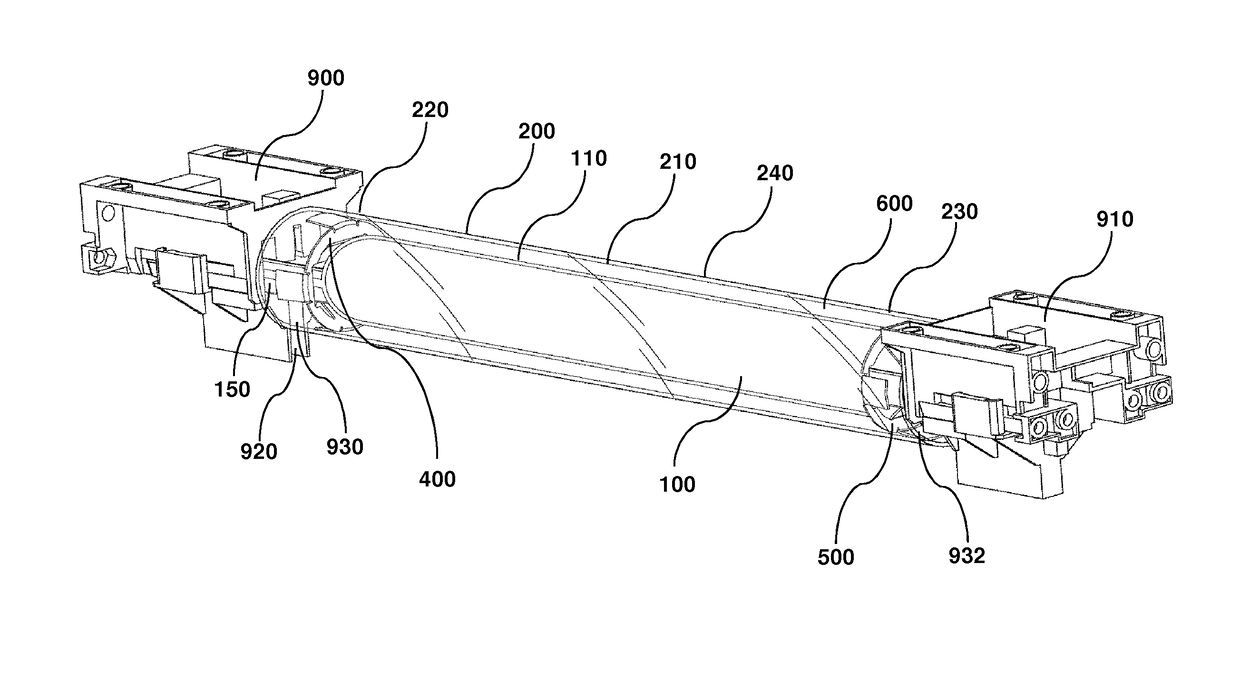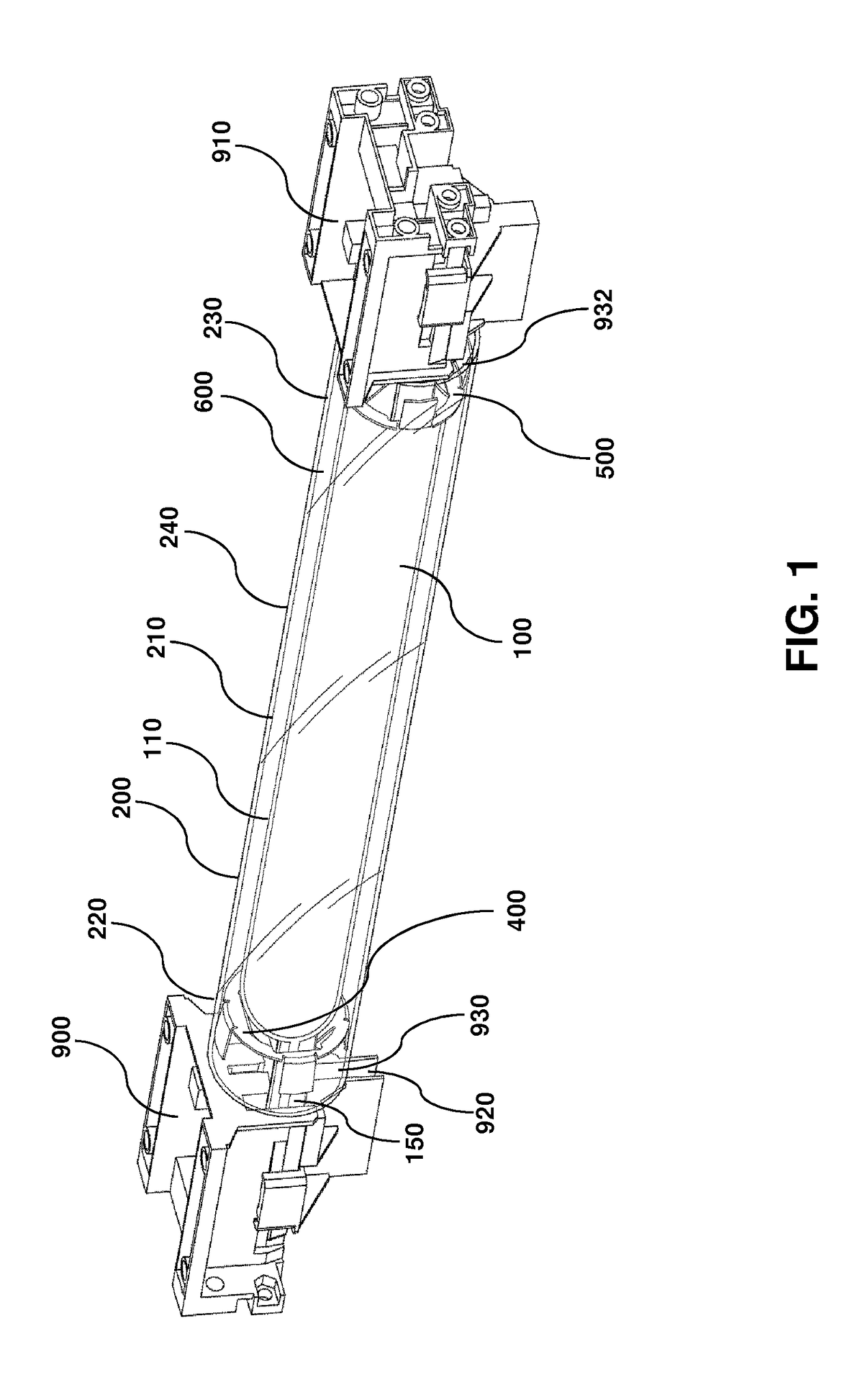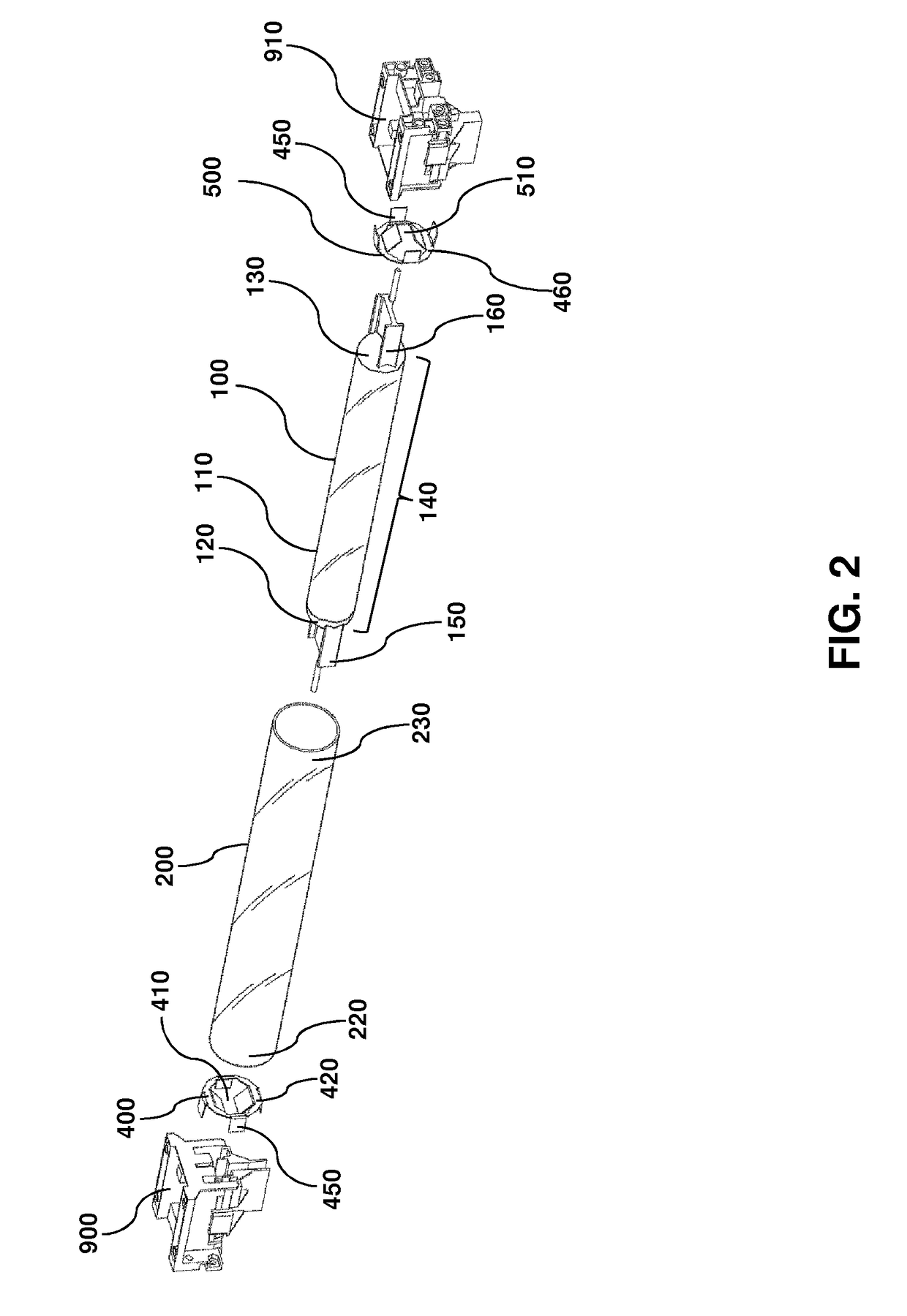Thermally isolated high intensity light source
a high-intensity light source and thermal isolation technology, applied in the direction of saving energy measures, construction fastening devices, light and heating apparatus, etc., can solve the problems of insufficient spectral output change, reduced bulb operating temperature, and complicated efforts to cool light sources in applications. , to achieve the effect of improving efficiency
- Summary
- Abstract
- Description
- Claims
- Application Information
AI Technical Summary
Benefits of technology
Problems solved by technology
Method used
Image
Examples
example 1
nsity Discharge Light Source
[0073]Provided herein are specially configured optical light sources, wherein a bulb is positioned within a sleeve, such as a quartz sleeve. This facilitates an increase in light intensity provided to the plant canopy, allows cooling of the light source without spectrum shift by flowing air, including cooled air, over an exterior facing surface of the sleeve, and increases safety in the event of a catastrophic light source failure such as a melt-down or explosion. Examples include an optical light source comprising a quartz sleeve that is separated from the outer surface of a bulb by a separation distance, wherein an inner surface of the quartz sleeve and the outer surface of the bulb define an insulative volume. This configuration is beneficial because the insulative volume increases an operating temperature of the bulb during use compared to an equivalent bulb without the quartz sleeve. This increase can occur even while the rest of the light source is ...
example 2
ip
[0081]The spacer clips provide an insulative volume around the bulb and prevent the bulb from touching the sleeve and may be conveniently configured to handle any of a wide range of bulb and sleeve geometries and sizes. An exemplary embodiment is shown in FIGS. 4-5. The spacer clips are formed by a ring member 420 with an outer edge 430, an inner edge 440, and protruding members 450 that may be circumferentially and evenly spaced at four positions along an outer facing surface 460. At certain opposibly facing positions around the ring member 420, such as two positions as illustrated, the protruding members 450 are in the form of spring tabs 470 having two members, an outer member 480 and an inner member 490. In this manner, the outer and inner protruding members provide reliable connection and spacing between the light source and sleeve.
example 3
Efficiency and Spectral Performance
[0082]The configuration of the sleeve provides improved spectral performance. By thermally isolating the bulb from the surrounding environment and retaining heat in close proximity, the efficiency of the light source increases. Quartz is particularly useful due to its optical clarity properties. FIGS. 7-10 are plots of the spectral output for different bulb wattages with and without a quartz sleeve for different times.
[0083]FIGS. 11-19 demonstrate that the addition of a quartz sleeve increases PPFD on a target area. The purpose of the experiments is to observe the spectral performance of an HPS bulb in a standard industry optical reflector with and without a quartz sleeve installed. Referring to FIGS. 11-19, the maximum PPFD is located at the center of the 4 foot by 4 foot target area. The target distance (from reflector to bottom) is 68 inches. The voltage to the ballast is 240 VAC. A photometer is used to collect light readings on the target area...
PUM
 Login to View More
Login to View More Abstract
Description
Claims
Application Information
 Login to View More
Login to View More - R&D
- Intellectual Property
- Life Sciences
- Materials
- Tech Scout
- Unparalleled Data Quality
- Higher Quality Content
- 60% Fewer Hallucinations
Browse by: Latest US Patents, China's latest patents, Technical Efficacy Thesaurus, Application Domain, Technology Topic, Popular Technical Reports.
© 2025 PatSnap. All rights reserved.Legal|Privacy policy|Modern Slavery Act Transparency Statement|Sitemap|About US| Contact US: help@patsnap.com



